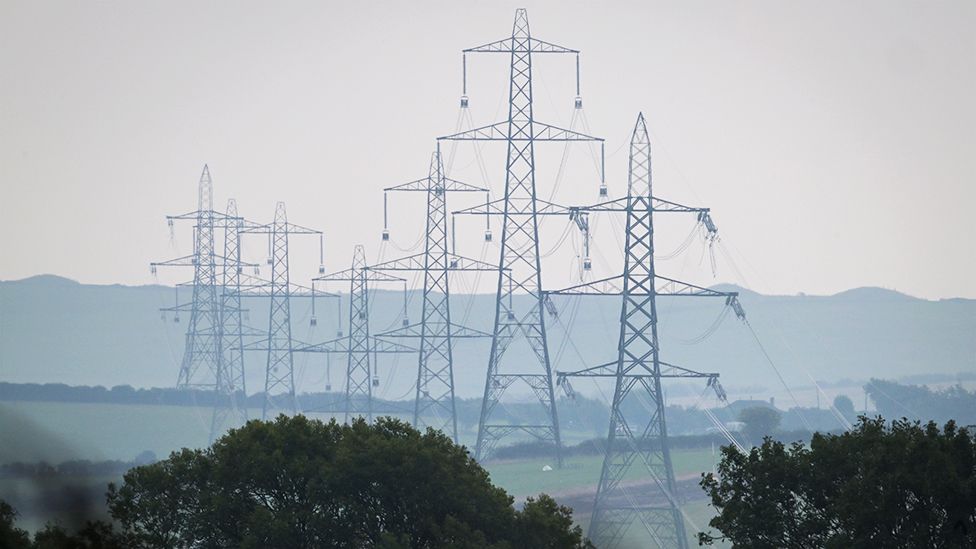ARTICLE AD BOX
 Image source, Getty Images
Image source, Getty Images
By Lucy Hooker
Business reporter, BBC News
There is a lower risk of electricity blackouts this winter compared to last, according to National Grid, thanks to increased generation and the ability to manage demand.
This year the UK was "in a different position", it said in a report.
Chances of the lights going out were almost back to where they were before the energy crisis, it said.
But a scheme to pay people for cutting electricity use at peak times will still be used to help manage demand.
Craig Dyke, head of national control at National Grid's Electricity System Operator (ESO), which is responsible for balancing demand and supply on the network, said the main change this year was a "big uptick" in overall capacity.
On top of that, "stress events" from last year had faded, Mr Dyke said, such as lower gas stores in western Europe following the war in Ukraine and a reduction in electricity supplies from France's nuclear power stations.
"Compared to last year it is almost going back to around where it was before last winter," said Mr Dyke.
"So the risks that we talked about last year, the probability of them occurring, are much, much lower."
An increase in industrial-scale battery storage would also make a difference, helping to smooth demand-supply imbalances, he said.
In its Winter Outlook National Grid ESO said under the most likely "base case" scenario the margin of electricity supply over demand would be 4.4 gigawatts (GW) or 7.4%, "broadly in line with recent winters".
Last winter the margin was just 3.7GW.
National Grid ESO is the electricity system operator for England, Scotland and Wales. Northern Ireland has a separate electricity operator.
Of the electricity generated in the UK in 2022:
- 40.8% came from fossil fuels
- 56.2% from low-carbon sources - including 41.5% from renewables and 14.7% from nuclear
During cold, dark winter months, demand for electricity rises. If that coincides with a windless high pressure, the ESO sometimes has to resort to back-up measures.
Only one coal-fired power station will be kept on standby this winter, it said. Over last winter it had five available.
Customer switch-offs
Despite the overall rosier outlook, the ESO plans to reintroduce its Demand Flexibility Scheme again this year.
Under the scheme it pays energy suppliers for a reduction in demand at peak times.
Last year many suppliers took up the scheme, offering their customers discounts or cash payments for switching off high-energy appliances on days when supplies were tight.
While the scheme is less likely to be needed this winter, it could operate on a much larger scale this year, the ESO said.
Many businesses, including food wholesalers and water companies had already inquired about taking part this year, after seeing the scheme work in their own homes, it said.
This winter the scheme could provide up to a gigawatt of demand flexibility if needed, Mr Dyke said.
Last winter 3,300 megawatt hour (MWh) were saved across 22 events, "enough to power nearly 10 million homes" the ESO said.
Payments were likely to be at a similar level to last year's £3,000 per MWh, it said, but how much would be passed on to customers and in what form - whether as cash payments, vouchers or even in the form of a prize lottery - was at suppliers' discretion.
The Demand Flexibility Service was launched in last November after gas supplies to Europe were disrupted following Russia's invasion of Ukraine.
Here are some energy saving ideas from environmental scientist Angela Terry, who set up One Home, a social enterprise that shares green, money-saving tips:
- Get a water-efficient shower head free of charge from your water company and use showers rather than baths
- Consider loft insulation, which she says costs around £680 for a typical semi-detached home and could save £285 a year on gas bills
- Hang out washing instead of using a tumble dryer, and walk rather than drive when possible
- Use windy days to feel where draughts are in the house. Wetting the back of your hand helps to locate them, then use insulation or draught-proofing tape
- Where available, press the smaller button to use less water to flush the toilet

 1 year ago
35
1 year ago
35








 English (US) ·
English (US) ·